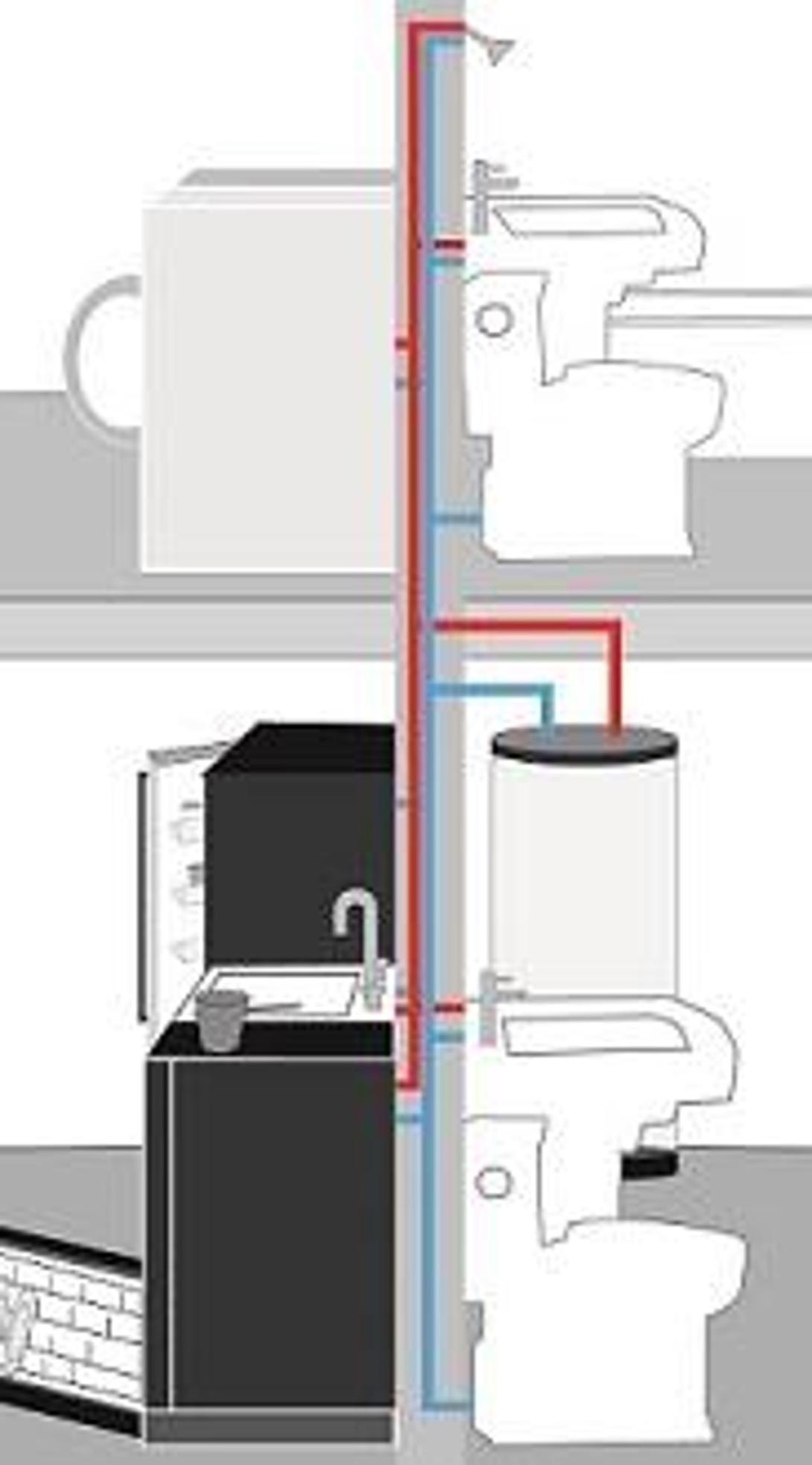
Plumbing
Supply Lines - Core Plumbing
Traditional hot water distribution systems have a trunk-and-branch layout, which has a somewhat long, large-diameter main line feeding smaller branches that flow to plumbing fixtures or split to serve multiple fixtures. This setup leads to higher energy bills and wasted water.
Long plumbing runs store gallons of water within the pipes that cools over time and that cool water often gets wasted before acceptably heated water arrives at the tap. Even in smaller homes (~1,200 square feet), the volume to the furthest fixture can exceed 1.5 gallons and the time to the tap can be more than 90 seconds. With the longer pipes in a home, an occupant can waste more than 3 gallons waiting for hot water (using enough energy to power a 60-watt light bulb for 12 hours), which really adds up over time. Recirculation systems and core plumbing designs are both options for reducing the amount of wasted water.
Core plumbing, as opposed to the traditional layout, uses a compact hot water plumbing layout where the home is designed so that all rooms using water (e.g., kitchen, bathrooms, and laundry room) are situated in close proximity to the water heater. That way, hot water gets to each plumbing fixture and appliance in as direct a path as possible. This method is known as “water- and energy-saving hot water distribution” or “on-demand compact hot water technology.” To minimize wasted cooled water while waiting for hot water, the hot water distribution system shall store no more than 0.5 gallons (1.9 liters) of water in any piping/manifold between the hot water source and any hot water fixture, and no more than 0.6 gallons (2.3 liters) of water should be collected from the hot water fixture before hot water is delivered.